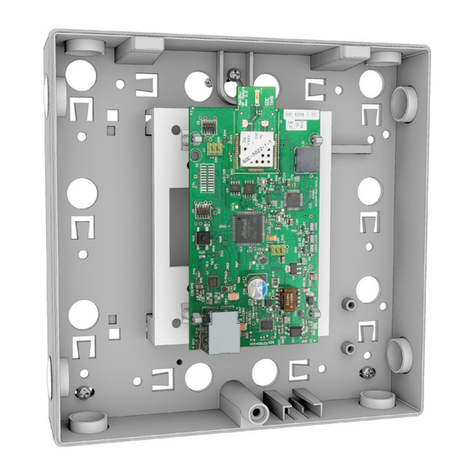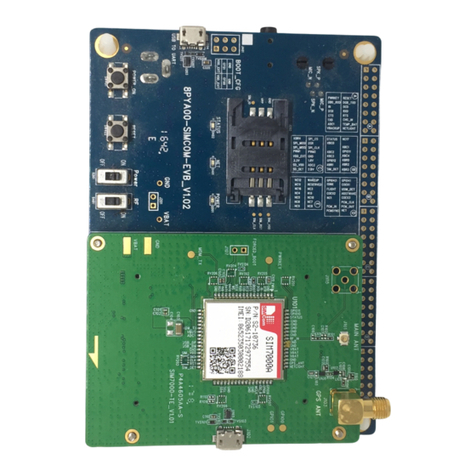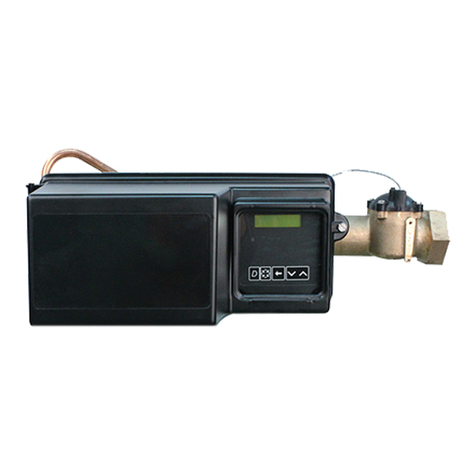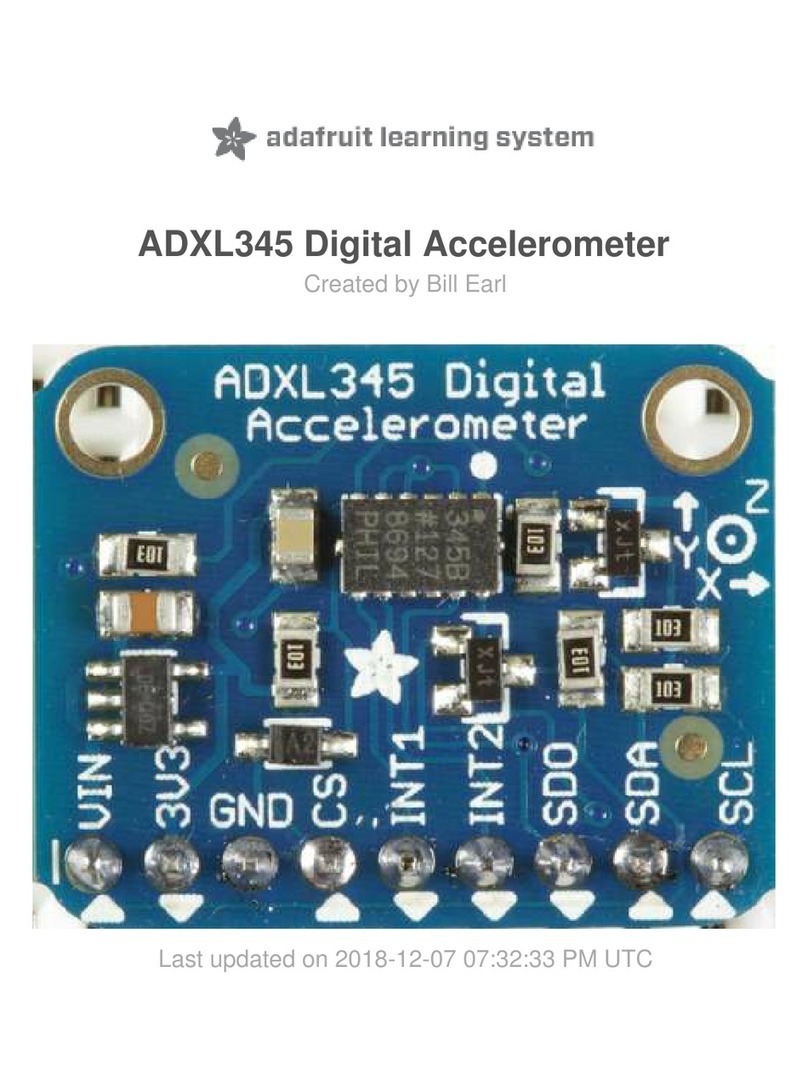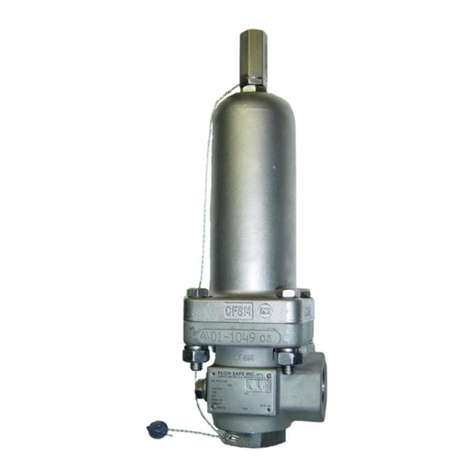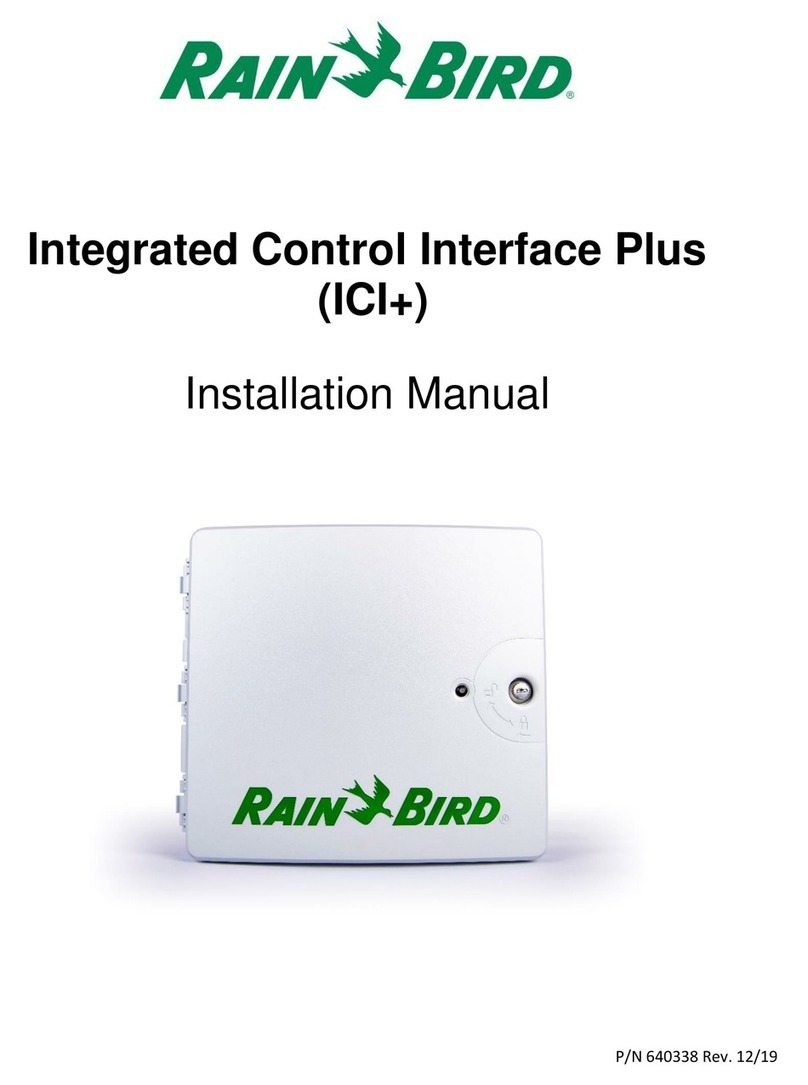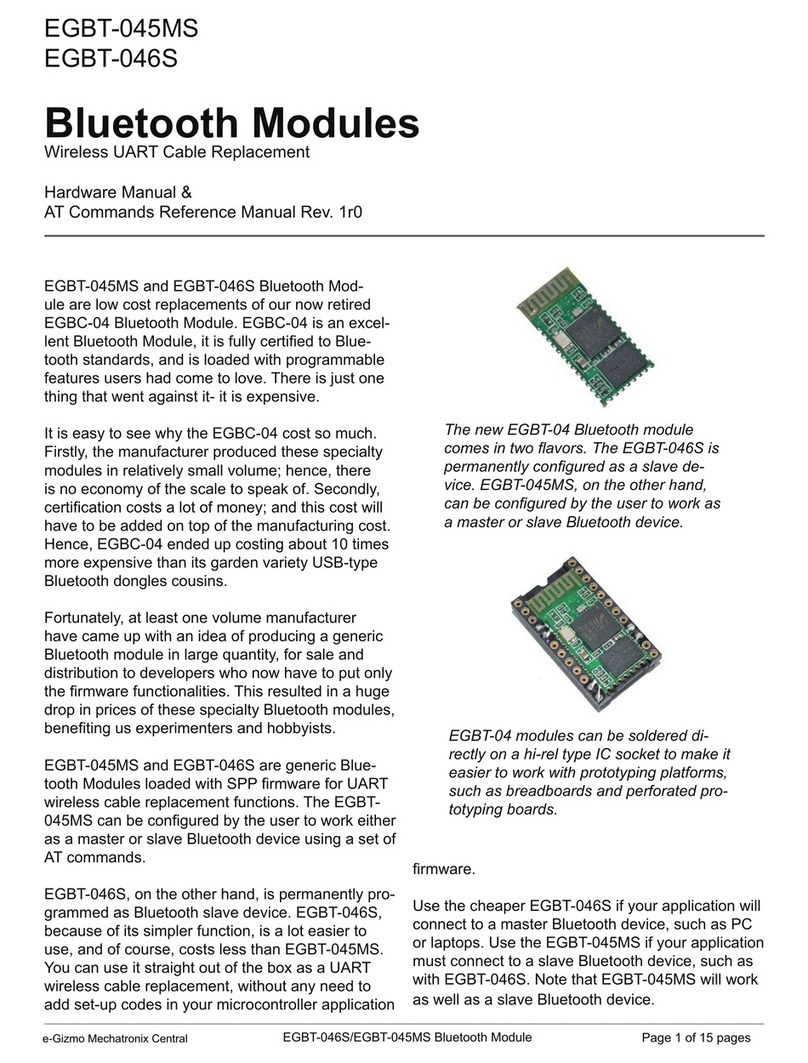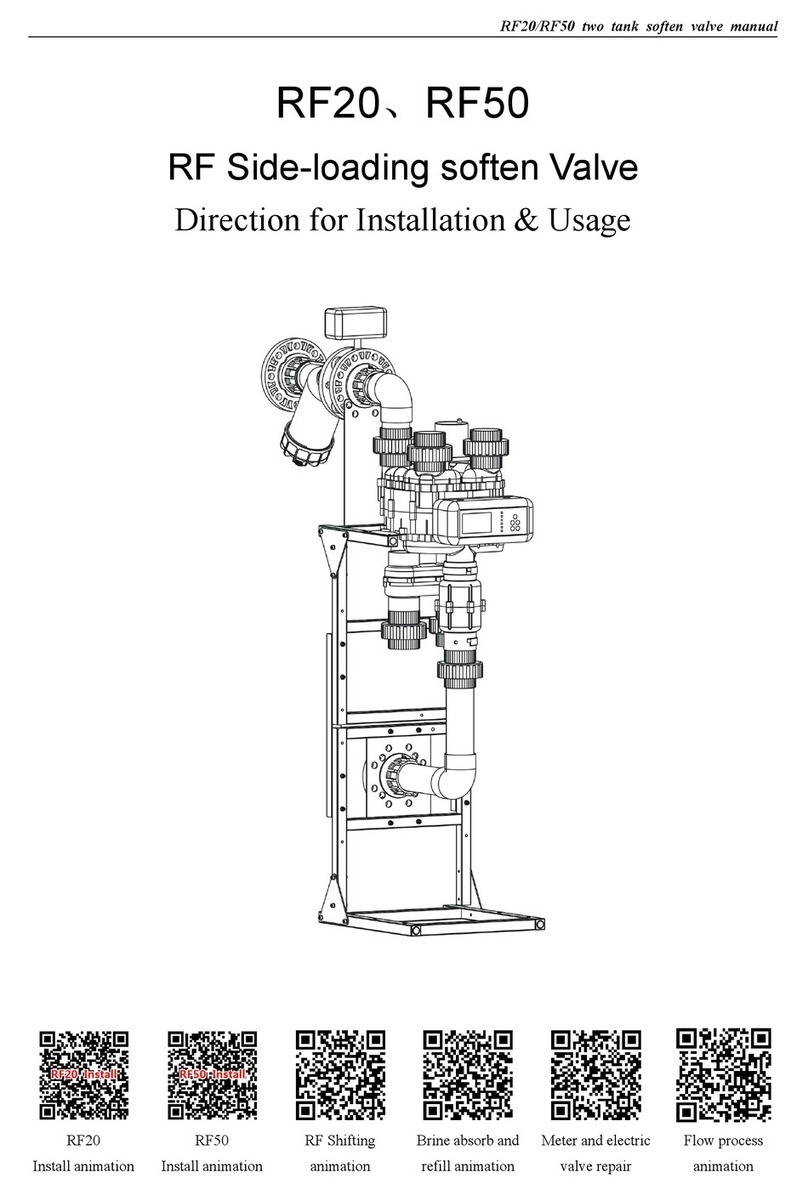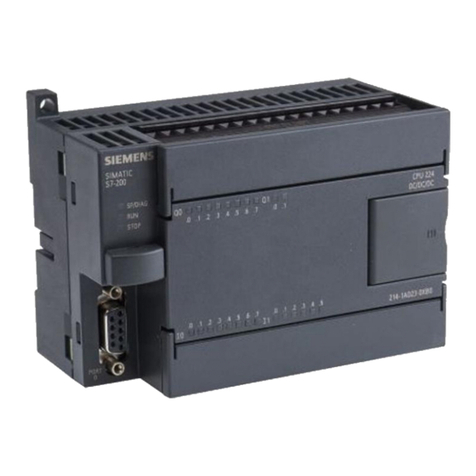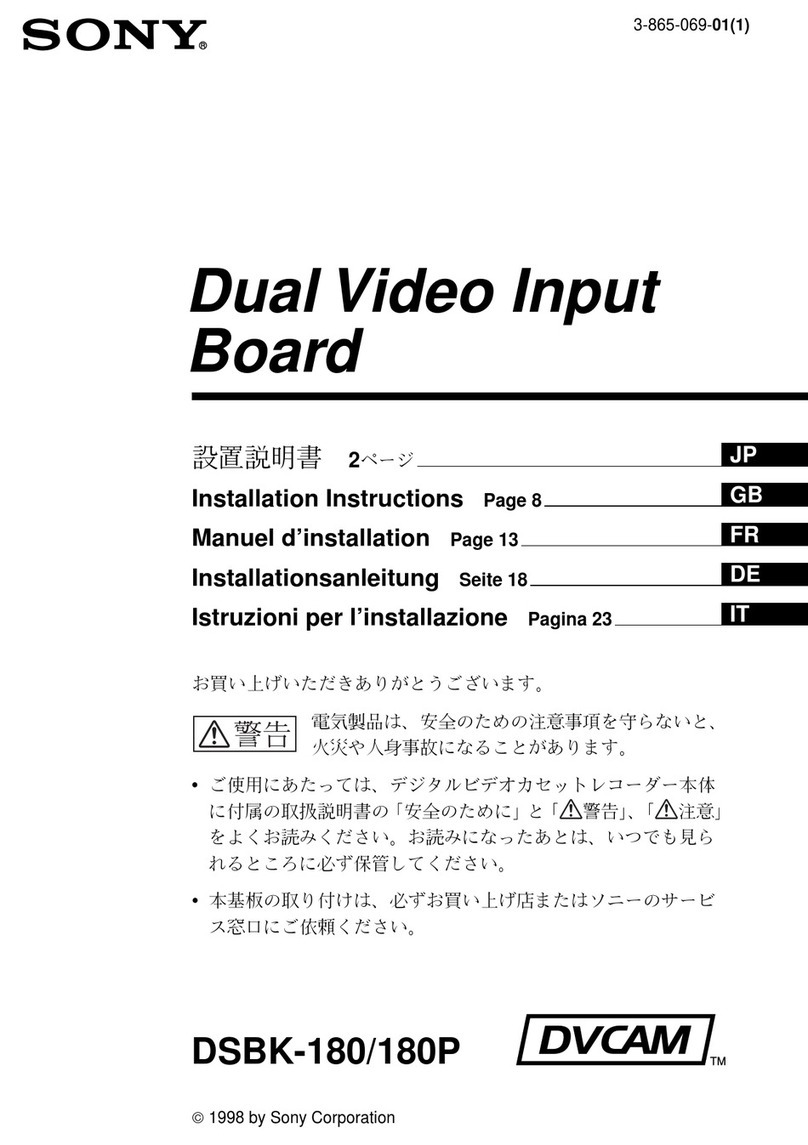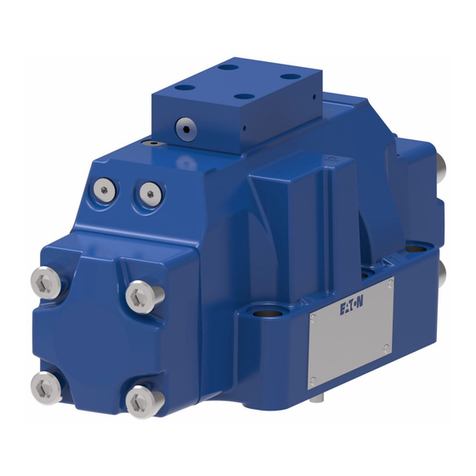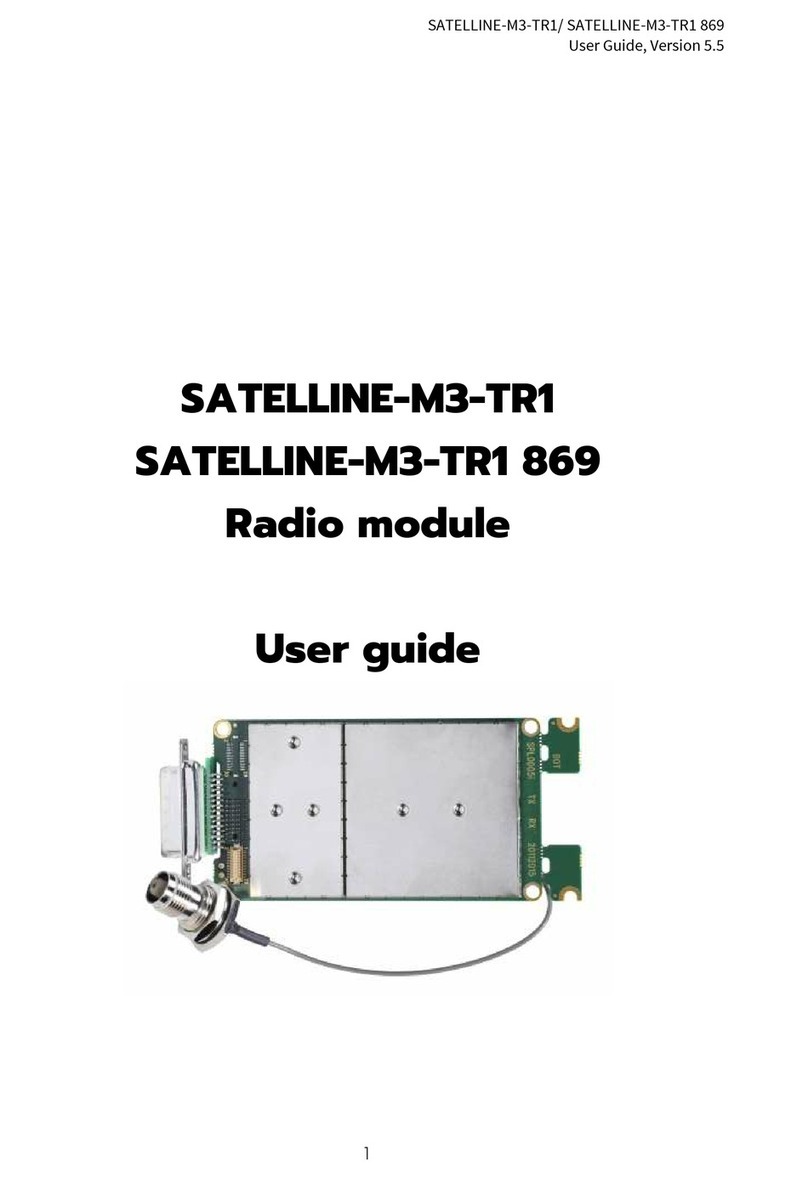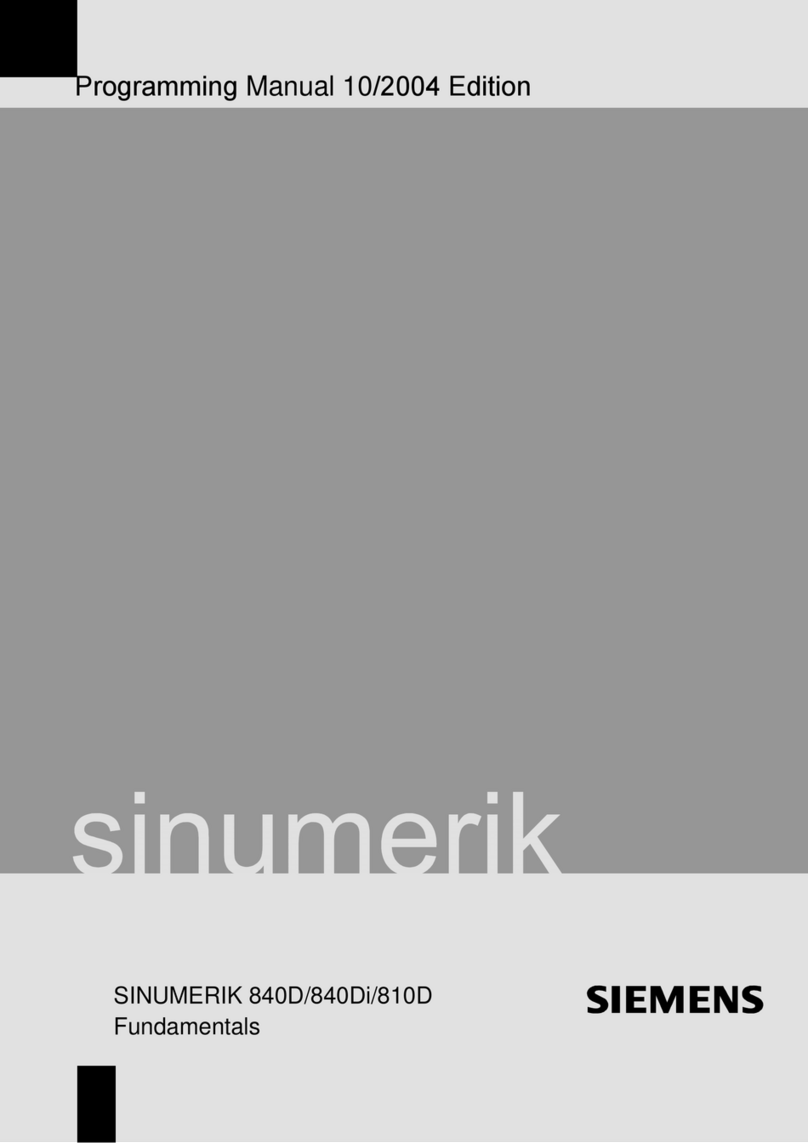GESTRA ZK 213 User manual

Control valve
ZK 213
Original Installation Instructions
818449-03

Contents
Foreword ............................................................................................................................................3
Availability.............................................................................................................................................3
Formatting features in the document ......................................................................................................3
Safety..................................................................................................................................................4
Use for the intended purpose .................................................................................................................4
Basic safety notes .................................................................................................................................4
Qualification of personnel.......................................................................................................................6
Protective gear......................................................................................................................................6
Typographic features of warning notes....................................................................................................6
Formatting features for warnings of property damage ..............................................................................6
Description .........................................................................................................................................7
Scope of supply and equipment specification ..........................................................................................7
Task and function................................................................................................................................14
Storing and transporting the equipment.........................................................................................16
Storing the equipment .........................................................................................................................16
Transporting the equipment .................................................................................................................17
Mounting and connecting the equipment.......................................................................................18
Preparing installation ...........................................................................................................................18
Connecting the equipment ...................................................................................................................19
Checking the function ..........................................................................................................................20
Operating the equipment .................................................................................................................21
After operation .................................................................................................................................21
Maintaining the equipment...................................................................................................................23
Purging the equipment.........................................................................................................................24
Disassembling the equipment...............................................................................................................26
Assembling the equipment...................................................................................................................40
Servicing the equipment and installing spare parts ................................................................................57
Troubleshooting ...............................................................................................................................58
Putting the equipment out of operation..........................................................................................59
Removing harmful substances..............................................................................................................59
Removing the equipment .....................................................................................................................59
Disposing of the equipment..................................................................................................................61
Technical data..................................................................................................................................61
Dimensions .........................................................................................................................................61
Weights ..............................................................................................................................................61
Fluid flowrate and differential pressure..................................................................................................61
Pressure & temperature ratings............................................................................................................61
Manufacturer's Declaration.............................................................................................................62

3
Foreword
This installation & operating manual (IOM) will help
you use the control valve ZK 213 and its variants
(referred to as "equipment" in this document) safely
and efficiently for its intended purpose.
This installation & operating manual is intended for
anyone commissioning, using, operating, servicing,
cleaning or disposing of this equipment and, in
particular, for professional after-sales service
technicians, qualified personnel and authorised and
trained staff.
All of these persons must read and understand the
content of this installation & operating manual.
Following the instructions given in this installation &
operating manual helps avoiding danger and
increases the reliability and service life of the
equipment. Please note that in addition to the
instructions given in this installation & operating
manual you must also observe all locally applicable
rules and regulations concerning the prevention of
accidents as well as approved safety guidelines for
good professional practice.
Availability
Keep this installation & operating manual together
with the plant documentation for future reference.
Make sure that this installation & operating manual
is available to the operator.
The installation & operating manual is part of the
equipment. Please hand over this installation &
operating manual when selling the equipment or
passing it on.
Keep the applicable documents specified on page 7
together with this installation & operating manual
for future reference.
Formatting features in the
document
Certain text elements of this installation & operating
manual feature a specific typographic design. You
can easily distinguish the following text elements:
Standard text
Cross-reference
Listing
Sub-items in listings
Steps for action.
Here you will find additio
nal useful
information and tips serving to assist you
in using the equipment to its fullest
potential.

4
Safety
Use for the intended purpose
The equipment is designed for controlling and
regulating the level, pressure and flowrate of fluids
in heat and process control systems.
Correct use includes compliance with the
instructions given in this installation & operating
manual, in particular obedience to all safety
instructions.
Indications and instructions stated in the applicable
documents are part of this installation & operating
manual.
Any other use of the equipment is considered to be
improper.
Note that the equipment is also used incorrectly if
the materials of the equipment are not suitable for
the fluid.
The equipment is also considered to be used
improperly if:
the equipment is not in proper working condition
when being used
the equipment is used in operating conditions
that exceed the pressure and temperature
ratings and limits stated in this IOM and the
applicable documents
the equipment is retrofitted or modified without
the written approval of the manufacturer
the equipment is fitted with spare parts that are
not approved by the manufacturer
the equipment is provided with an actuator that
is not approved by the manufacturer
the equipment is operated or serviced by
unqualified personnel.
The personnel must have the qualification and
experience specified on page 6.
Basic safety notes
Explosion hazard
Explosion risk if equipment is used that is not
suitable for the environmental conditions. When
using the equipment in explosion risk areas
make sure that:
The permissible surface temperature of the
equipment for the place of installation must
not be exceeded.
If electrically insulated equipment is installed
appropriate measures must be taken to
discharge any static electricity between pipe
flanges.
The heat generated by friction caused by
moving parts that do not run smoothly can
cause explosions. Make sure that all moving
parts can operate smoothly.
When carrying out welding work in order to
install or remove the equipment flying sparks
may be generated that can cause fire or
explosion. Observe any on-site regulations for
fire and explosion prevention.
Only qualified personnel is allowed to mount or
remove the equipment or its components.
Risk of severe injuries
The equipment may become hot during
operation. Do not operate the equipment unless
thermal insulation or protection against
accidental contact prevents you from touching
hot surfaces.
The equipment is under pressure during
operation and may be hot. Before carrying out
any work on the equipment make sure that the
following requirements are met:
The pipes must be depressurized (0 bar).
The fluid must be completely removed from
the pipes and the equipment.
During work on the equipment the
installation must be switched off and
protected against unauthorised or
unintended activation.
The pipes and the equipment must have
cooled down to room temperature (approx.
20 °C).

5
If the equipment is used in contaminated areas
there is a risk of severe injuries or death caused
by harmful substances in or on the equipment.
Before working on the equipment make sure
that it is completely decontaminated. Always
wear the protective clothing prescribed for
contaminated areas when working on the
equipment.
The equipment must only be used with fluids
that do not attack the material and the gaskets
and sealings of the equipment. Otherwise leaks
may occur and hot or toxic fluid could escape.
The equipment and its component parts must
only be mounted or removed by qualified
personnel. A qualified person must be
acquainted with and experienced in the
following:
Making pipe connections.
Selecting suitable lifting gear and
understanding the rules for its safe use.
Working with dangerous (contaminated, hot
or pressurized) fluids.
If the admissible temperature and pressure
limits are exceeded the equipment may be
destroyed and hot or pressurized fluid may
escape. This presents the risk of severe injuries
or death. Make sure that the equipment is only
operated within the admissible service range.
For more information on pressure and
temperature ratings see name plate or the
supplied parts list.
The equipment may be damaged if the
connection of the equipment with the pipe is not
stable enough or the equipment is not
sufficiently supported. Hot or pressurized fluid
may escape. Only qualified personnel is allowed
to install and connect the equipment.
If the support of the equipment during
installation is insufficient the equipment might
fall down, thereby causing bruises or injuries.
Make sure the equipment is safely held in place
during installation and cannot fall down. Wear
the protective clothing specified for the place of
installation.
If the stuffing box is leaking there is a risk of
severe injuries caused by escaping hot fluid.
Use the equipment only if it is in proper working
condition. Replace any leaking stuffing box seal.
The equipment can be provided with different
types of actuator, e. g. with an electric or
hydraulic actuator. Depending on the type of
power supply for the actuator there is a risk of
severe injuries or death for various reasons.
Before working on the equipment cut off power
supply to the actuator. Observe all danger notes
and follow all instructions given in the
installation & operating manual of the actuator.
If you have a question please contact the
manufacturer of the actuator.
The moving parts of the equipment can cause
severe injuries or death. Make sure that nobody
is standing close to these moving parts or can
touch them while the equipment is operating.
Before working on the equipment make sure
that the power supply to the actuator is cut off
and cannot be switched on accidentally.
Risk of minor injuries
Sharp edges on component parts can cause
cuts. Always wear industrial gloves when
servicing the equipment.
The equipment can become hot during
operation. This presents the risk of burns
caused by heat radiation or when touching the
equipment. Do no touch the equipment during
operation. Always wear heat resistant protective
gear when working on the equipment.
Information on property damage or
malfunctions
Malfunctions will occur if the equipment is
installed in a wrong position or with the flow
arrow pointing in the opposite direction of the
fluid flow. This may result in damage to the
equipment or the installation. Make sure that
the flow arrow on the equipment body matches
the indicated direction of the fluid flow in the
pipe.
If the material is unsuitable for the fluid,
increased wear may occur and fluid may
escape. Make sure that the material is suitable
for the fluid used in your installation.

6
Qualification of personnel
A qualified person must be acquainted with and
experienced in the following:
the pertinent on-site rules and regulations for
preventing fire and explosions as well as
industrial safety regulations
working on pressure equipment
making pipe connections
working with dangerous (hot or pressurized)
fluids
lifting and transporting loads
observing all notes and instructions in this
installation & operating manual and the
applicable documents
connecting the power supply of the actuator
Protective gear
The required protective gear depends on the types
of fluid used and the regulations on site. For more
information on suitable safety clothing and safety
gear refer to the safety data sheet of the fluid in
question.
Protective gear comprises the following items:
protective helmet
work boots
industrial leather gloves
Wear some form of ear protection when standing
close to the equipment (1 m or less) during
operation.
Typographic features of warning
notes
DANGER
Notes with the heading DANGER warn
against imminent dangerous situations that
can lead to death or serious injuries.
WARNING
Notes with the heading WARNING warn
against possibly dangerous situations that
could lead to death or serious injuries.
CAUTION
Notes with the heading CAUTION warn
against dangerous situations that could
lead to minor or moderate injuries.
Formatting features for warnings
of property damage
Attention!
This information warns of a situation
leading to property damage.

7
Description
Scope of supply and equipment
specification
Scope of supply
Our equipment is delivered packed and ready for
assembly.
Applicable documents
The following documents are part of the supply of
the equipment:
Declaration of incorporation
Parts list
Tool list
DImensional drawing with indications of centre
of mass
Documents provided by the manufacturer of
actuator
Technical documents for position indicator (if
available)
These documents are part of the user
documentation and must be kept together with this
installation & operating manual for future reference.
Equipment specification
The equipment consists of the following main
components:
Body
Insert
Yoke
Nozzle
Different equipment variants are available. The type
designation has a code that indicates the respective
variant.
The body is available as angle-type or Z-type.
The code letter "E" in the type designation
indicates angle-type and "Z" Z-type.
The five available sizes differ from each other
only in weight and dimensions. The size of the
equipment is indicated in the type designation
by a code number stated after the body design
letter.
The equipment can be fitted with various types
of actuators. The actuator type is indicated by
the following code numbers in the type
designation:
13: electrically operated linear actuator
14: spindle bearing for electrically operated
rotary actuator or handwheel
20: pneumatically operated diaphragm
actuator or piston actuator
40: Hydraulic cylinder
As optional extra a pressure balance device may
be connected to the insert. Equipment with
pressure balance has the suffix "mD" in its type
designation. Equipment without pressure
balance has the suffix "oD" in its type
designation.
The throttling system is equipped with four to six
stages for pressure reduction. The number of
stages is indicated after the type of nozzle.
Example of type designations
"ZK 213-E5/40 mD"
Angle-type design, size 5. The equipment features
a hydraulic cylinder as actuator. The equipment is
provided with a pressure balance device.
"ZK 213-E4/14 mD"
Angle-type design, size 4. The equipment has a
spindle bearing for an electrically operated rotary
actuator or a handwheel. The equipment is provided
with a pressure balance device.
In most cases the equipment described in
this IOM is of the angle
-type and has a
spindle bearing for a rotary actuator
without pressure balance.
If any other variant is shown or described it
will be explici
tly stated.
End connections
The equipment is available with the following end
connections:
Butt-weld ends
Flanges
The end connection is not specified in the type
designation.

8
Component parts
No.
Designation
1
Mechanical connection for actuator, in
equipment with rotary actuator this is a
spindle bearing (shown here)
2
Yoke
3
Name plate
4
Body
No.
Designation
5
Direction arrow (on both sides)
6
Insert
7
Pressure balance device

9
The yoke is fitted with the following items:
No.
Designation
8
Spindle
9
Scale
10
Scale marking on coupling
No.
Designation
11
Coupling
12
Stem

10
The stuffing box seal consists of the following items:
No.
Designation
13
Stuffing box flange
14
Stuffing box
No.
Designation
15
Gland packing
16
Stuffing box ring

11
The following items are fitted inside the equipment:
No.
Designation
6
Insert (here with pressure balance)
12
Stem
17
Upper main gasket
No.
Designation
18
Sleeve
19
Lower main gasket
20
Collar bush

12
No.
Designation
12
Stem
17
Upper main gasket
21
Pressure piece
22
Threaded ring
23
Retaining ring
No.
Designation
24
Valve plug
25
Thrust ring
26
Sleeves
27
Seat bushing

13
The following items are available as optional extra:
No.
Designation
7
Pressure balance device
28
Position indicator

14
Name plate
The following items are indicated on the name
plate:
Manufacturer
Type designation
Design
Nominal size
Pressure rating
Max. service temperature
Max. service pressure
Max. admissible differential pressure
Flow characteristic
CE marking
Serial number
The following items are indicated on the equipment
body:
Material
Identification marking of material testing
Batch code
Direction of flow
Manufacturing date (quarter/year)
Application of European Directives
Pressure Equipment Directive
The equipment conforms to this Directive (see
"Declaration of Incorporation" section) and can be
used for the following media:
Fluids of group 2
ATEX Directive
The equipment has classification: CE Ex II 2G/D c X.
For use in potentially explosive atmospheres in
zones (surrounding atmosphere to Directive
1999/92/EC) 1, 2, 21 and 22, please read and
observe the following information:
The sign "X" in the Ex label signifies that operation
at an excessive surface temperature caused by the
medium must be avoided. The equipment itself
does not generate additional surface temperatures.
Once installed, static electricity may arise between
the equipment and the connected system. During
use in potentially explosive atmospheres, the
discharge or prevention of possible electrostatic
charging is the responsibility of the manufacturer or
owner of the system. If there is a possibility that
medium might escape, e.g. via actuating devices
or leaks in screwed couplings, the manufacturer or
owner of the system must take this into
consideration when dividing the area into zones.
The equipment classification and Declaration of
Conformity do not apply to any electric, hydraulic or
pneumatic drive that may be installed.
If using the equipment with a drive, the category of
the drive may have an adverse effect on the
equipment category 2G/D.
Please read and observe the relevant
information in the drive manufacturer's
documentation.
Task and function
Purpose
The equipment is designed to reduce pressure in
pipes through which the following fluids flow:
water
steam
condensed water
In addition the equipment can control the flowrate
and the fluid level. The equipment can stop the fluid
flow completely, effecting a pipe seal to attain
bubble-tight shut off.
The tandem seat reduces the flow velocity at the
seating surface during opening and closing, thereby
minimizing the wear on the seating surfaces.

15
Function
The equipment features a system of flash chambers
where the differential pressure is reduced in stages
and the flow is split up into many partial flows.
This decreases the noise level during operation and
dramatically extends the service life of the
equipment thanks to its high wear resistance.
The equipment is fitted with an externally actuated
stem. During the opening process the stem controls
the fluid flow by successively opening a series of
flash chambers.
When the stem is in the closed position the fluid
flow is completely stopped and bubble-tight closure
is ensured.
The tandem seat consists of a primary and a
secondary seat for double shut-off. When the
equipment is closed the stem (12) and plug (24) are
in the lowest position.
During the opening process first only the stem lifts
off. As a result of the reduced load the disc springs
(55) decompress.
Then the plug is lifted off its seat by the threaded
ring (22). The equipment is now open.

16
Storing and transporting the
equipment
Attention!
Equipment can be
damaged if stored or
transported improperly.
Close all openings with the sealing
plugs or covers supplied with the
equipment or use similar sealing
covers.
Protect the equipment against
moisture and corrosive atmospheres.
Please contact the manufacturer if
the
specified transport and/or storage
requirements cannot be met.
Storing the equipment
Please observe the following items when storing
the equipment:
Make sure that the equipment is completely
disconnected.
Before storage make sure that the equipment is
dry and free from any fluid residues.
The equipment must be protected by its
packaging. The packaging must protect the
equipment from moisture and mechanical
damage.
The equipment must be stored in a horizontal
position.
Make sure that the stem of the equipment is
moved at least every two months in order to
avoid that the packing rings get stuck.
CAUTION
There is a risk of getting crushed by the
spindle.
Wear sturdy leather gloves when
working on the spindle or stem.
Make sure that no persons are in the
area of the spindle or stem.
Move the spindle slowly.
Follow all instructions given in the installation &
operating manual of the actuator.
Observe and follow all instructions given in the
installation & operating manual for the position
indicator.
Make sure that all these requirements are
always met when storing the equipment.
Please contact the manufacturer if you cannot
comply with the recommended storage
conditions.

17
Transporting the equipment
DANGER
Risk of bruises if the equipment or
component parts fall down.
Always wear protective gear when
working on the equipment.
Use suitable lifting gear when moving
or lifting the equipment and/or
component parts.
Make sure that the equipment cannot
topple over.
To lift the equipment use only the
valve body or the bonnet.
Make sure that nobody is standing
below the lifted equipment.
The protective gear must comprise at least the
following:
Safety helmet to EN 397
Safety footwear to EN ISO 20345
Protective leather gloves to EN 388
For more information on suitable safety clothing and
safety gear refer to the safety data sheet of the fluid
in question.
The lifting gear must be of sufficient strength for
the equipment including the actuator.
For more information on the weight of the
equipment see the attached documents. For more
information on the weight of the actuator see the
documents provided by the actuator manufacturer.
For more information on lifting points and the
centres of mass see the attached documents.
Carefully clean the equipment before
transportation.
Meet the requirements for storage also when
transporting the equipment.
Prior to transport seal off connections with
sealing plugs.
If you do not have the sealing plugs
supplied with the equipment use
appropriate seal caps to seal off the
connections.
For short distances (only a few metres) you can
transport the equipment unpacked.
When transporting the equipment over larger
distances use the original packaging.
If you do not have the original packaging use a
box that protects the equipment adequately
against corrosion and physical damage.

18
Mounting and connecting the
equipment
DANGER
Risk of bruises if the equipment or
comp
onent parts fall down.
Always wear protective gear when
working on the equipment.
Use suitable lifting gear when moving
or lifting the equipment and/or
component parts.
Make sure that the equipment cannot
topple over.
To lift the equipment use only the
valve body or the bonnet.
Make sure that nobody is standing
below the lifted equipment.
The protective gear must comprise at least the
following:
Safety helmet to EN 397
Safety footwear to EN ISO 20345
Protective leather gloves to EN 388
For more information on suitable safety clothing and
safety gear refer to the safety data sheet of the fluid
in question.
The lifting gear must be of sufficient strength for
the equipment including the actuator.
For more information on the weight of the
equipment see the attached documents. For more
information on the weight of the actuator see the
documents provided by the actuator manufacturer.
Preparing installation
Remove the transport packaging.
Check the equipment for transport damage.
If you detect any transport damage, please
contact the manufacturer.
When supplied by the factory, the connections may
be sealed off with sealing plugs.
Remove sealing plugs before mounting the
equipment.
Keep the sealing plugs and the packing for
further use.
DANGER
Personnel working on pipes are exposed to
safety risks and may suffer severe injuries,
poisoning or even los
s of life.
Make sure that no hot or hazardous
fluid is in the equipment or the pipes.
Make sure that the pipes upstream
and downstream of the equipment are
depressurised.
Make sure that the installation is
switched off and protected against
unauthorised or
unintended activation.
Make sure that the equipment and the
pipes have cooled down to room
temperatures.
Wear protective clothing that is
suitable for the fluid and, if necessary,
wear protective gear.
For more information on suitable protective clothing
and safety gear refer to the safety data sheet of the
fluid in question.
Drain pipes until they are empty.
Switch the installation off and protect it against
unauthorised or unintended re-activation.

19
Connecting the equipment
DANGER
Incorrectly connected equipment can result
in accidents with extremely severe injuries
or death.
Make sure that only specialist
personnel connect the equipment to
the pipe.
Make sure that the direction of flow in
the pipe matches the flow direction
arrow on the equipment.
Make sure that the connected pipe
does not subject the body to any
stress (forces or torques) during
installation and operation.
Specialist personnel must have knowledge and
experience of the type of pipe connection used.
An arrow indicating the flow direction is
provided on both sides of the inlet of the
valve body.
Attention!
Equipment will be damaged if the support
is undersized or in the wrong place.
Mount the support to the pipes next to
the equipment.
Make sure that the supports are
strong enough to hold the weight of
the equipment and to withstand the
forces that occur during operation.
Contact the manufacturer if you want
to mount the supports directly to the
equipment.
The equipment is designed for installation
with the stem in vertical position and the
actuator mounted on top.
Other installation positions are possible.
Contact the manufacturer if you want to
mount the equipment in a different
position of installation.
Mount the equipment in the desired installation
position.
Make sure that the equipment is supported by
the pipes.
If the supports can only be attached
directly to the equipment ask the
manufacturer for more information on
possible positions for the supports.
Connect the end connections of the equipment
properly to the pipes.
Some materials require a subsequent heat
treatment of the welds after the equipment has
been welded in place. If you want to perform a heat
treatment please observe the following notes:
You do not have to remove the internals of
the equipment in order to perform the heat
treatment.
Attention!
The equipment might get damaged.
Make sure that only qualified
personnel carries out the heat
treatment.
Before starting the heat treatment
make sure that the equipment is not
insulated.
Specialist personnel must be highly qualified and
fully experienced in making welded joints with the
type of material used. For information on the
materials of the equipment see the nameplate on
the equipment.
Make sure that the valve is at its middle
position, i. e. half stroke.

20
Make sure that only qualified personnel carries
out the heat treatment.
After the heat treatment you may insulate the
equipment if necessary.
DANGER
Incorrectly connected equipment can
cause fatal accidents or severe injuries.
Make sure that only qualified skilled
personnel connect the actuator to the
power supply.
Follow all instructions given by the
actuator manufacturer.
Specialist personnel must be highly qualified and
fully experienced in connecting the power supply in
question.
Connect the actuator properly with the
mechanical connection of the equipment.
For more details on how to connect the
actuator with the stem and how to mount
the mechanical connection see section
"
Assembling the equipment
" from page
40 onwards.
Connect the actuator properly to its power
supply.
Checking the function
Make sure that the equipment is safely mounted
and that all connections are made correctly.
To remove residues from the pipes and the
equipment after installation purge the
pipes with the fluid to be used. For more
information see chapter
"Purging the
equipment"
on page 24.
CAUTION
There i
s a risk of getting crushed by the
spindle.
Wear sturdy leather gloves when
working on the spindle or stem.
Make sure that no persons are in the
area of the spindle or stem.
Move the spindle slowly.
Carry out a performance test to check the
functions of the equipment.
The stem must perform at least one full valve
stroke.
Change, if necessary, the actuator settings as
indicated in the operating manual of the
actuator.
Table of contents
Other GESTRA Control Unit manuals
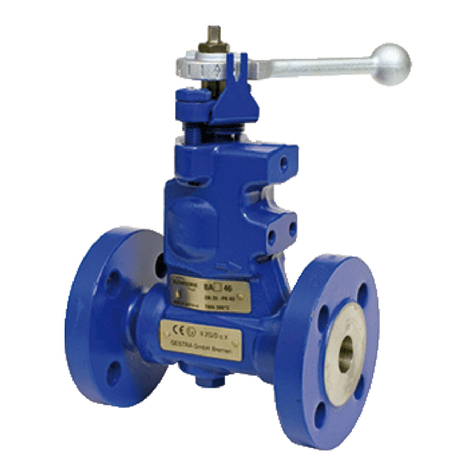
GESTRA
GESTRA BA 46 User manual
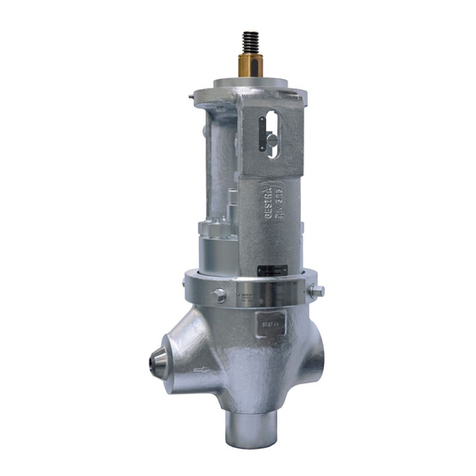
GESTRA
GESTRA ZK 313 User manual
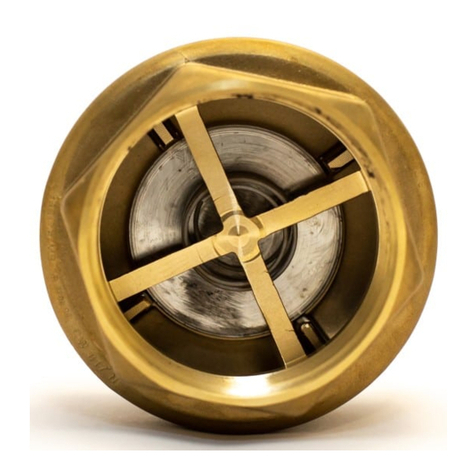
GESTRA
GESTRA RK Series User manual

GESTRA
GESTRA Gestramat CW 41 User manual
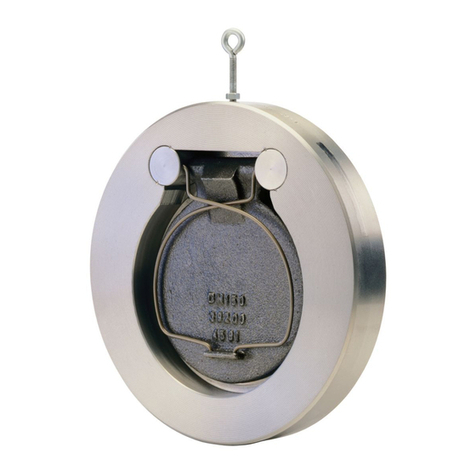
GESTRA
GESTRA CB 26 User manual

GESTRA
GESTRA BB 1 Series User manual
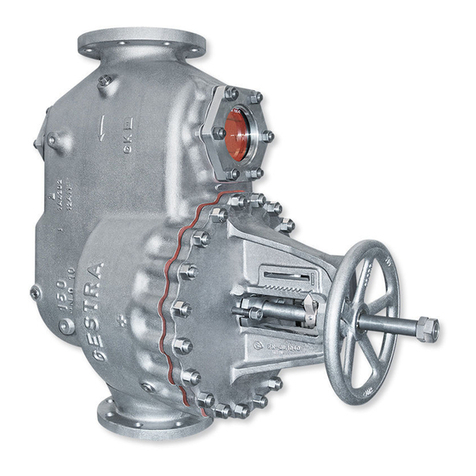
GESTRA
GESTRA GK 11 User manual
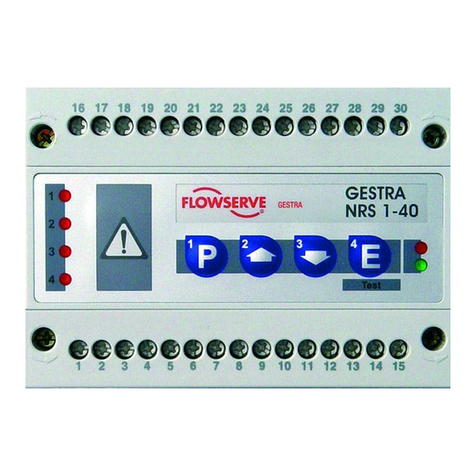
GESTRA
GESTRA NRS 1-40.1 User manual
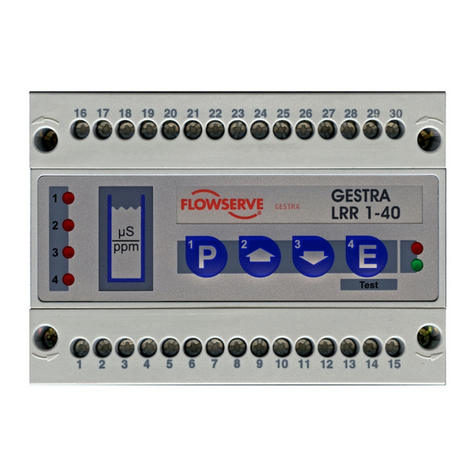
GESTRA
GESTRA LRR 1-40 User manual

GESTRA
GESTRA BK 15 User manual
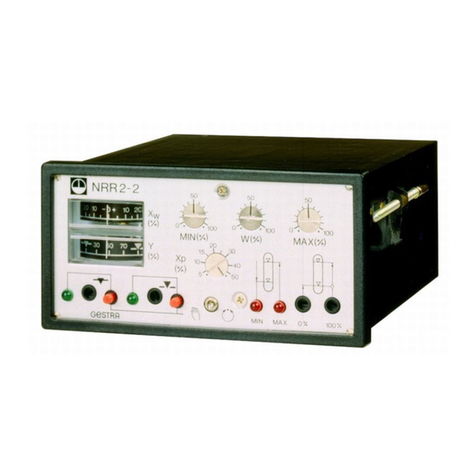
GESTRA
GESTRA NRR 2-2e Quick guide
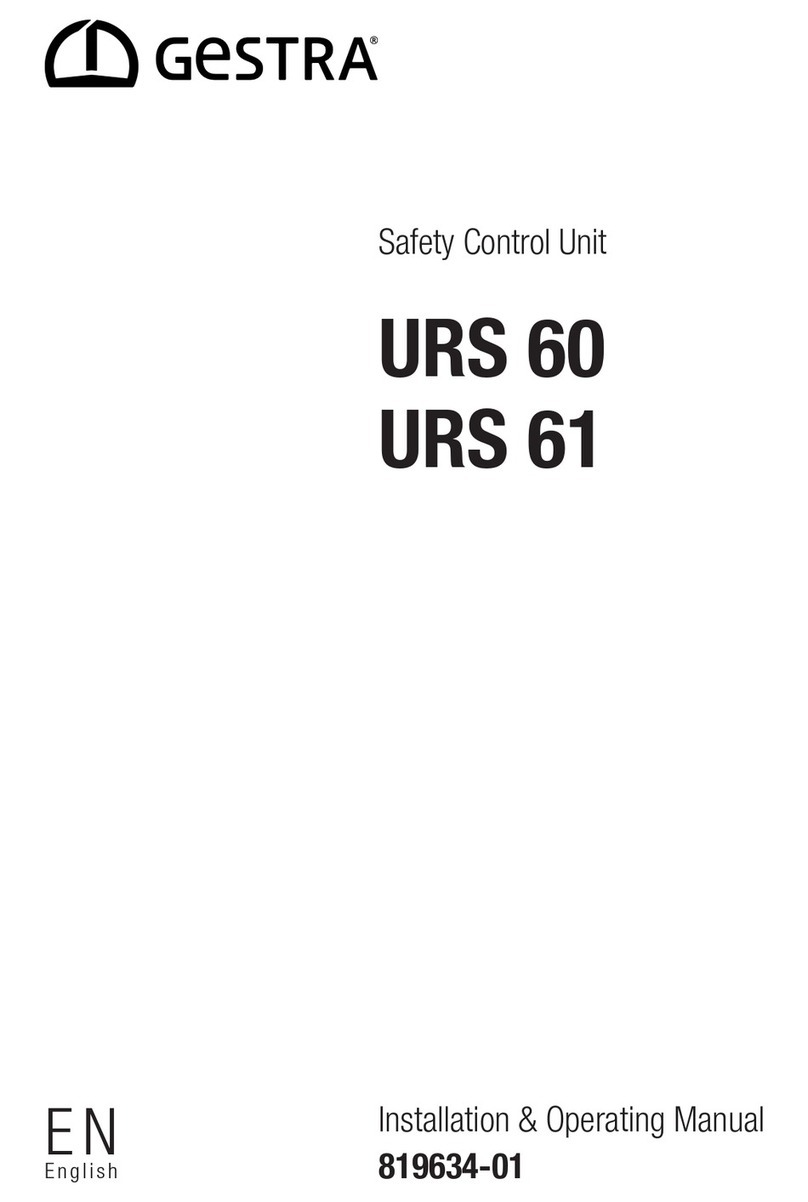
GESTRA
GESTRA URS 60 Installation instructions
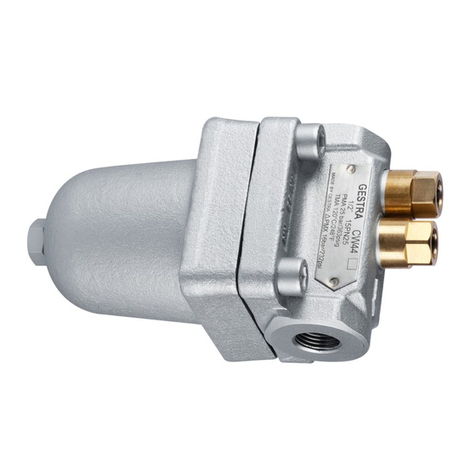
GESTRA
GESTRA CW 44 User manual
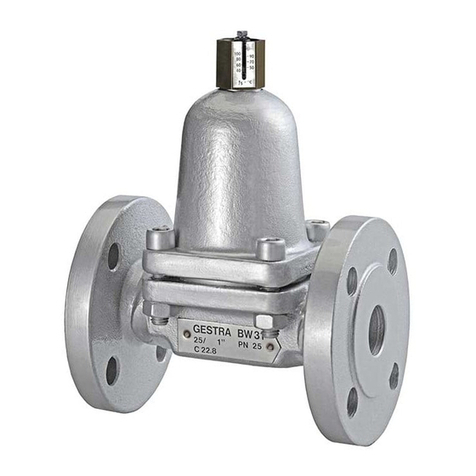
GESTRA
GESTRA BW 31A User manual

GESTRA
GESTRA UNA 13P User manual
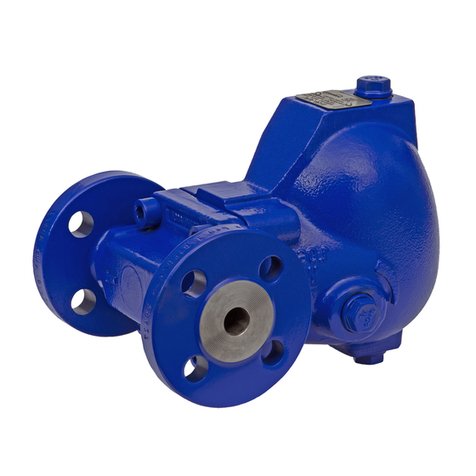
GESTRA
GESTRA UNA 43 User manual
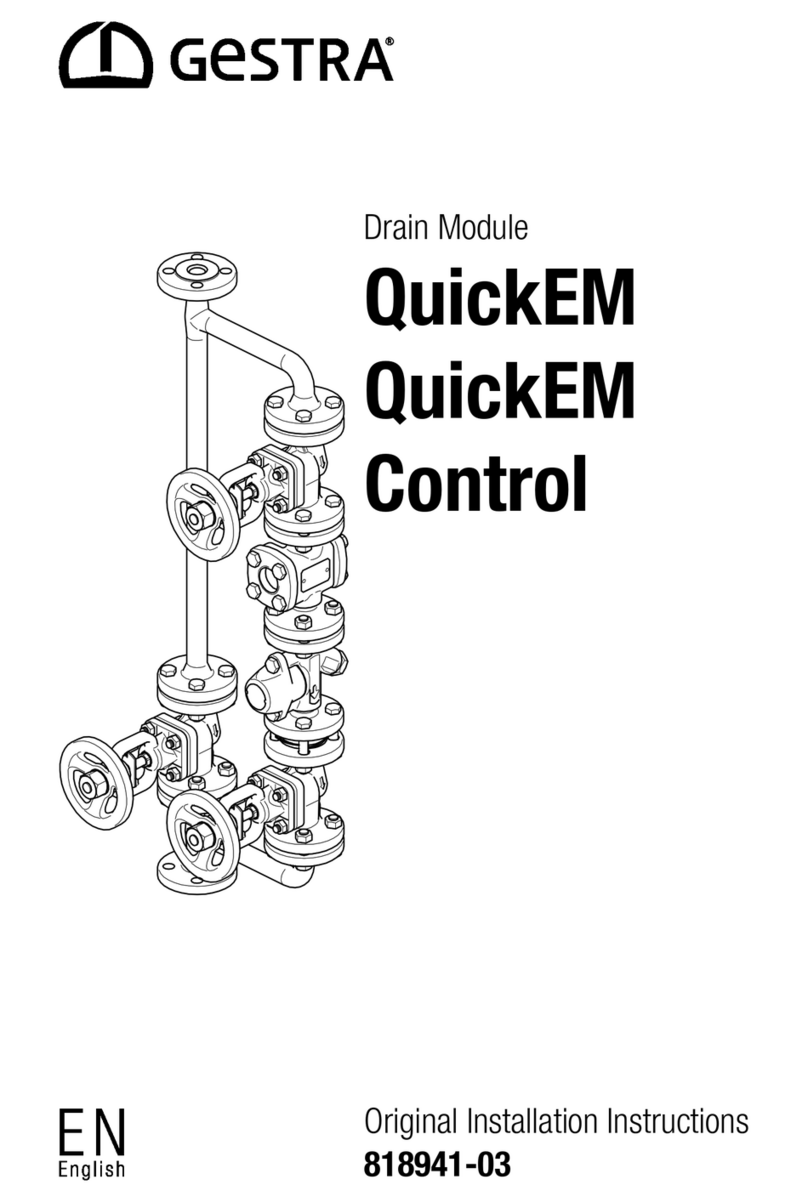
GESTRA
GESTRA QuickEM User manual
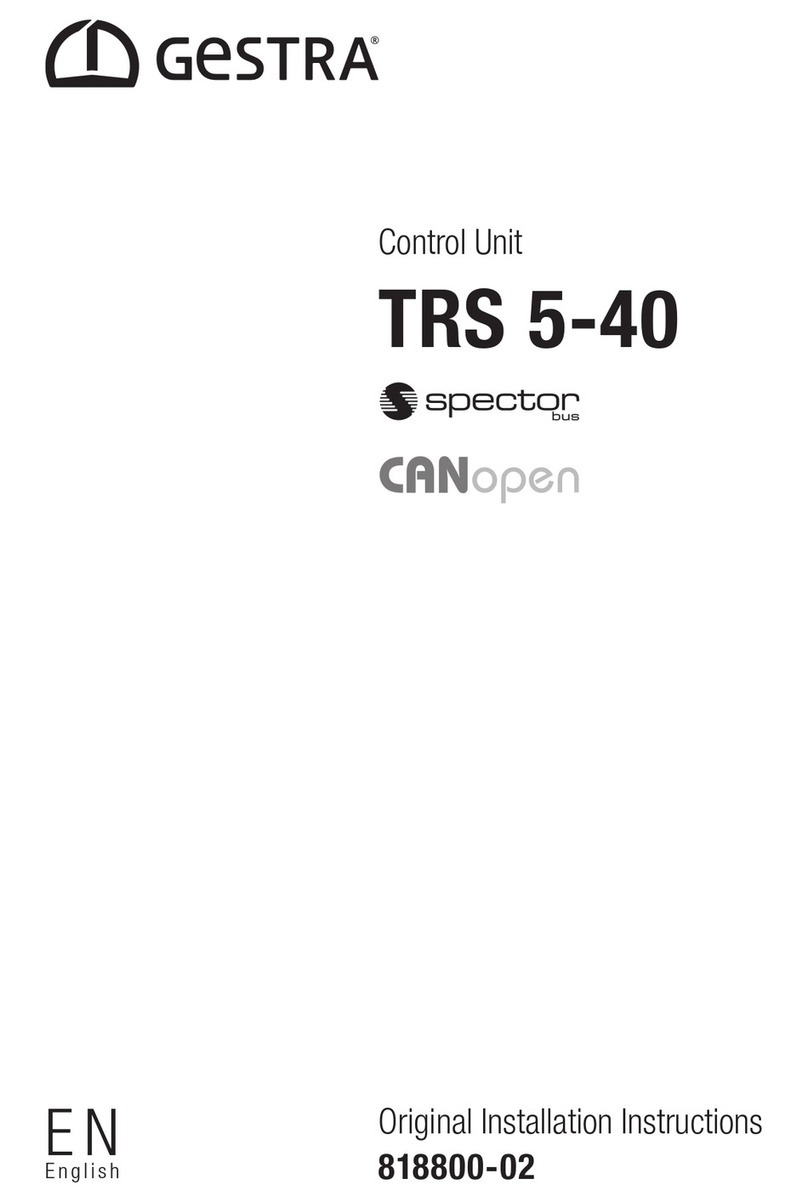
GESTRA
GESTRA TRS 5-40 User manual
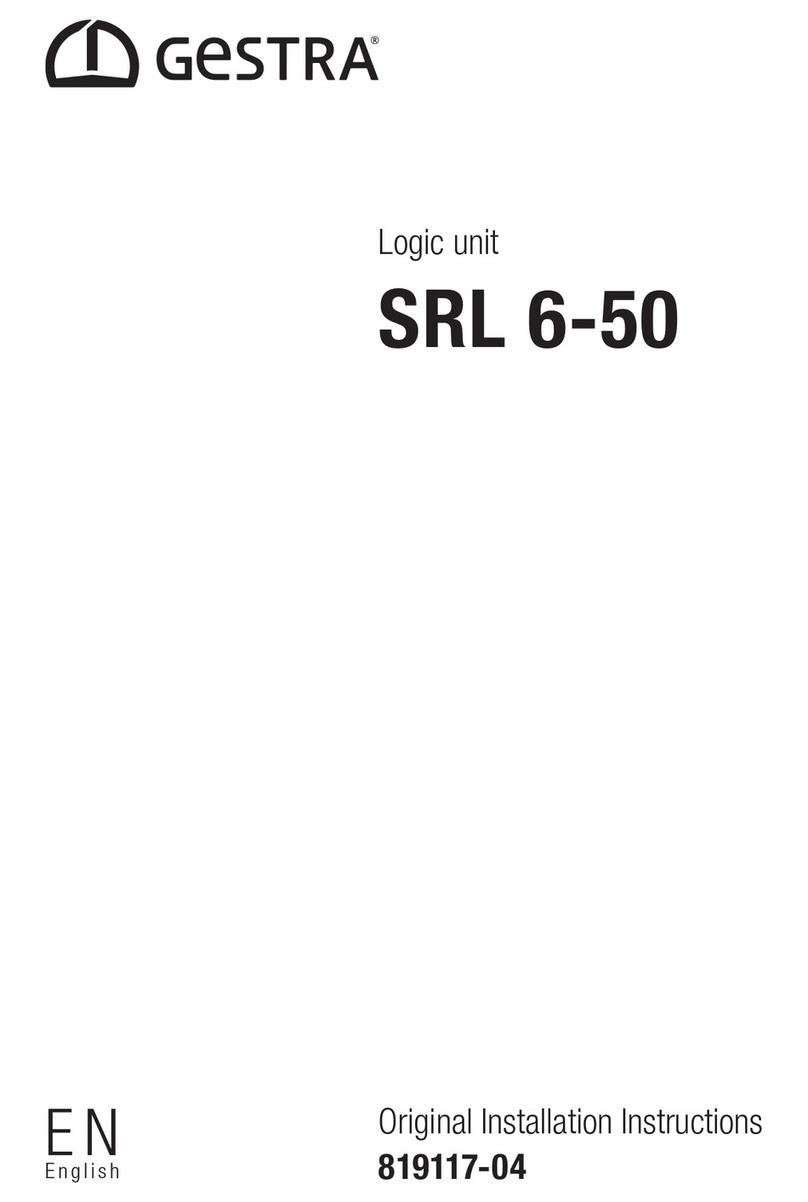
GESTRA
GESTRA SRL 6-50 User manual
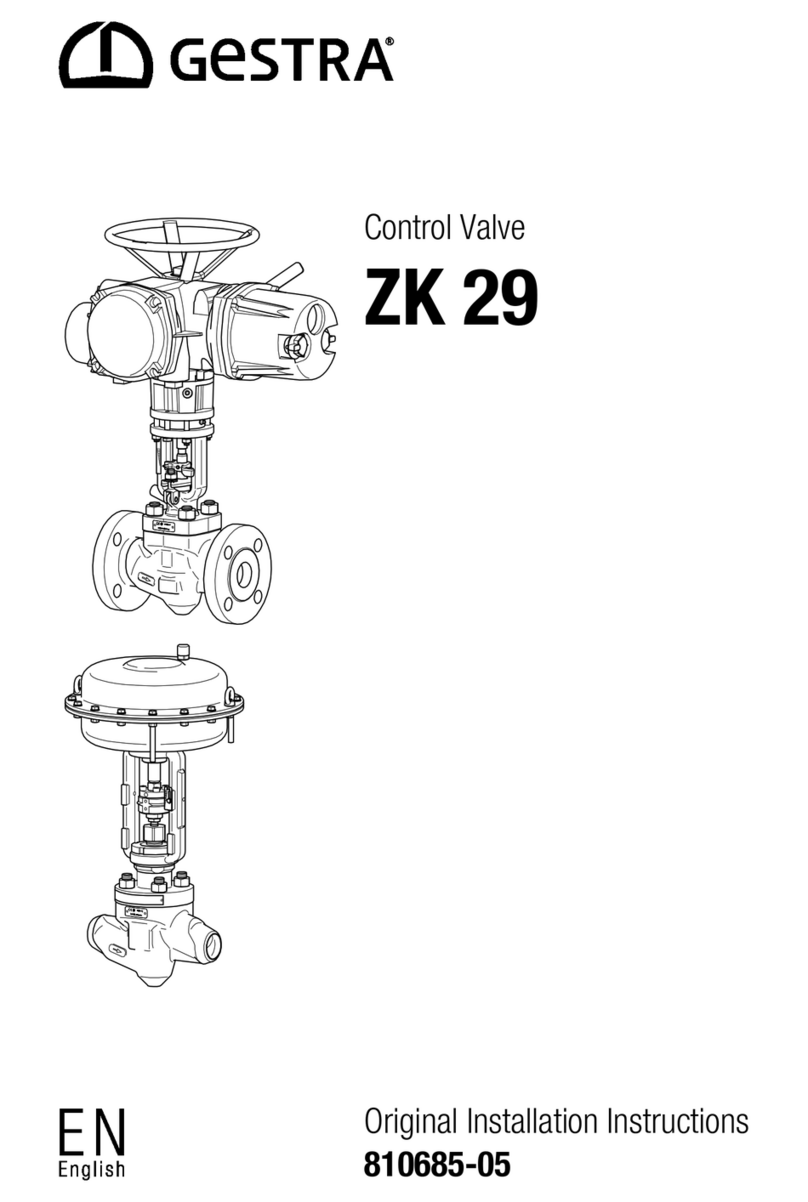
GESTRA
GESTRA ZK 29 User manual


